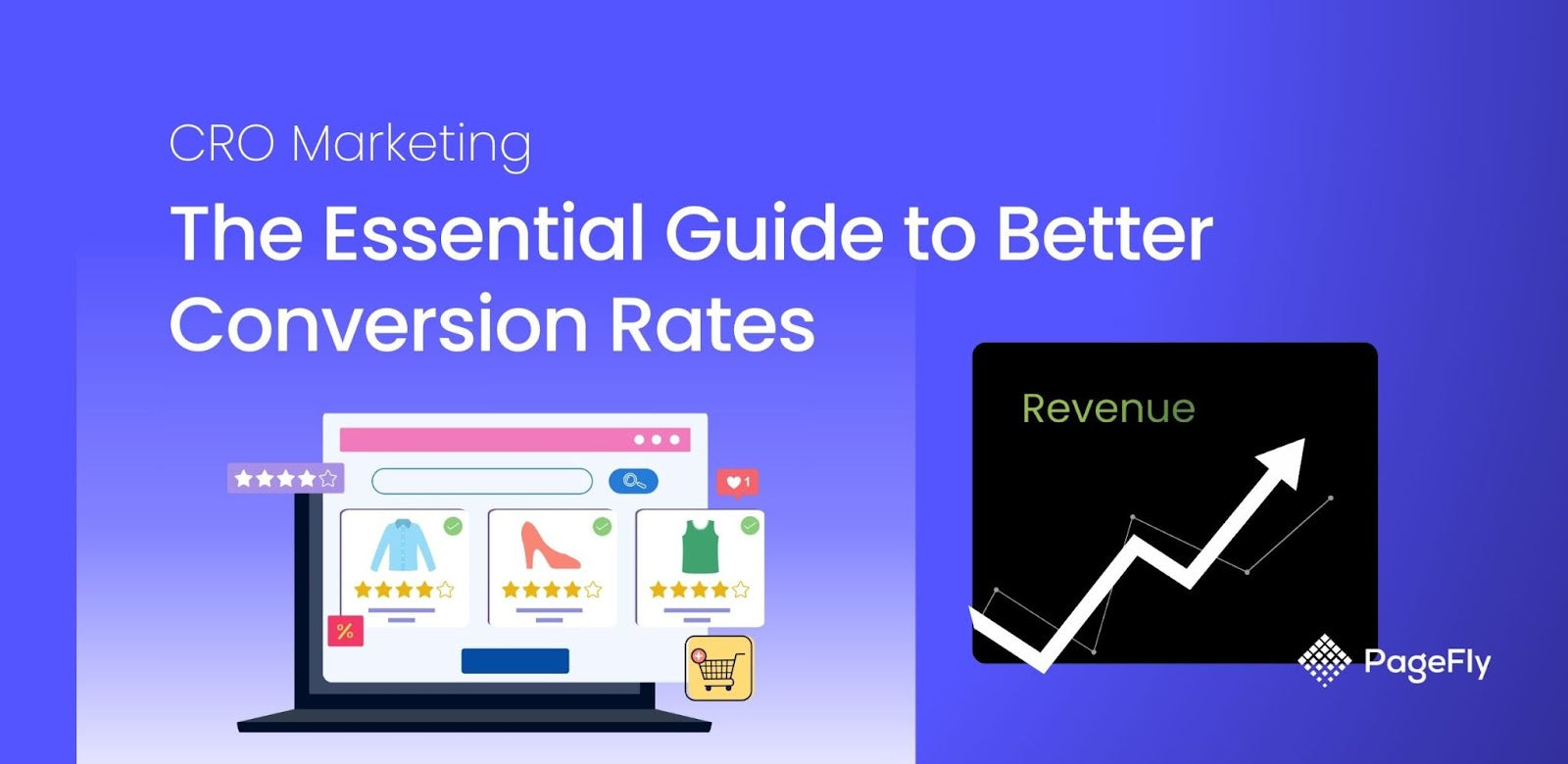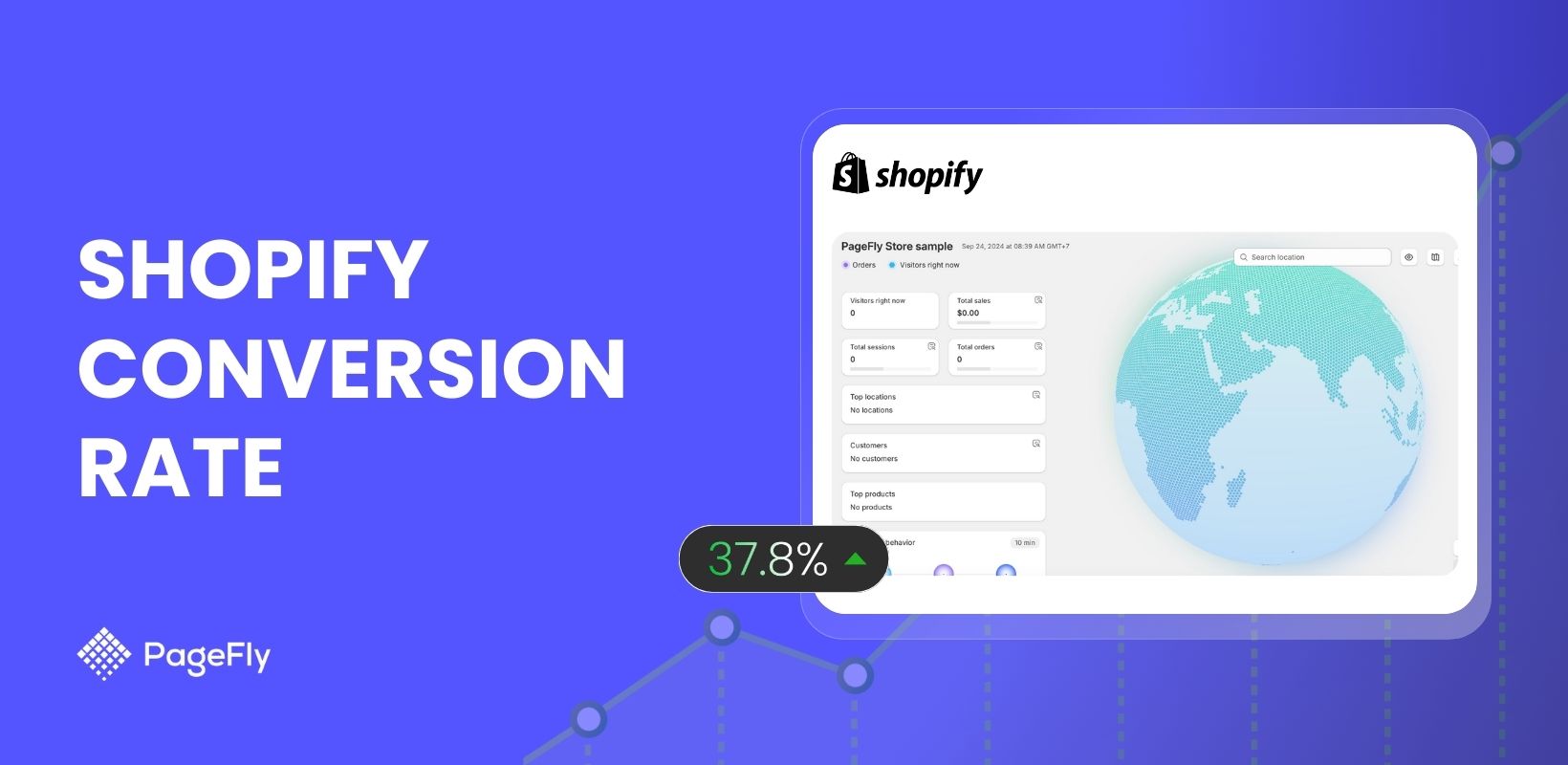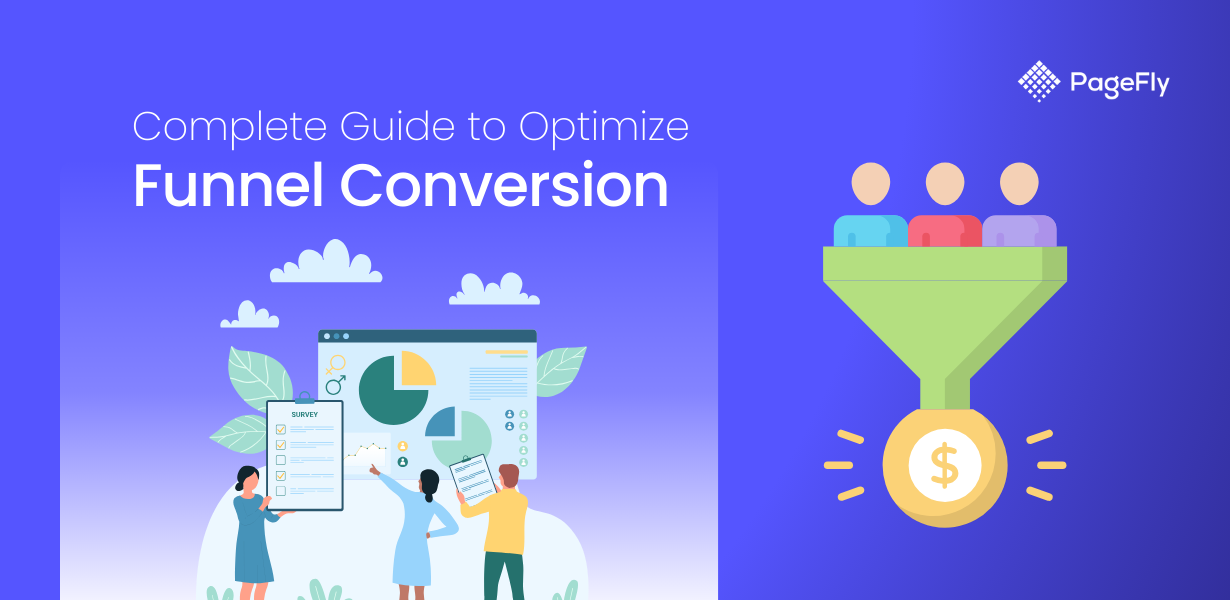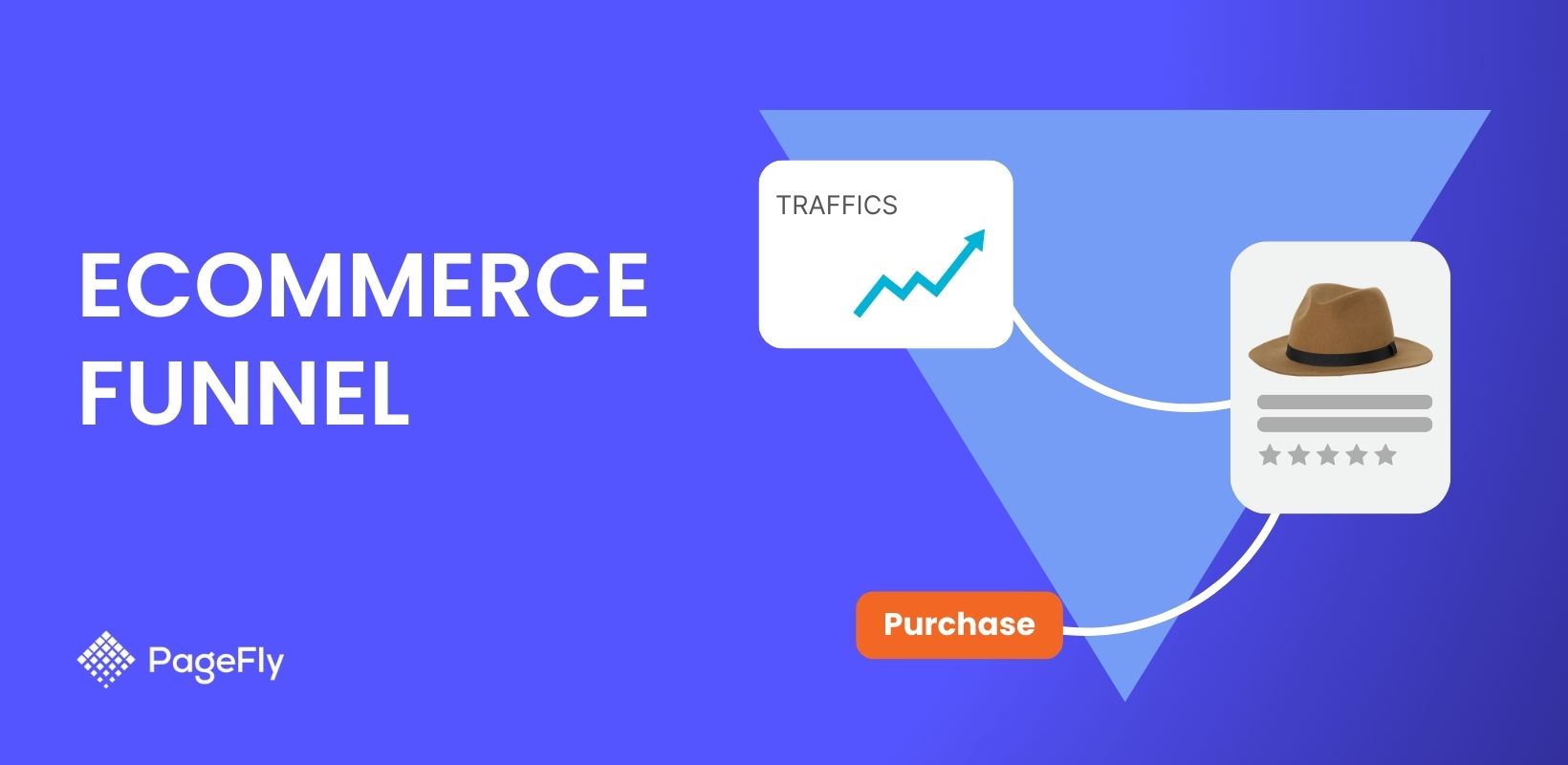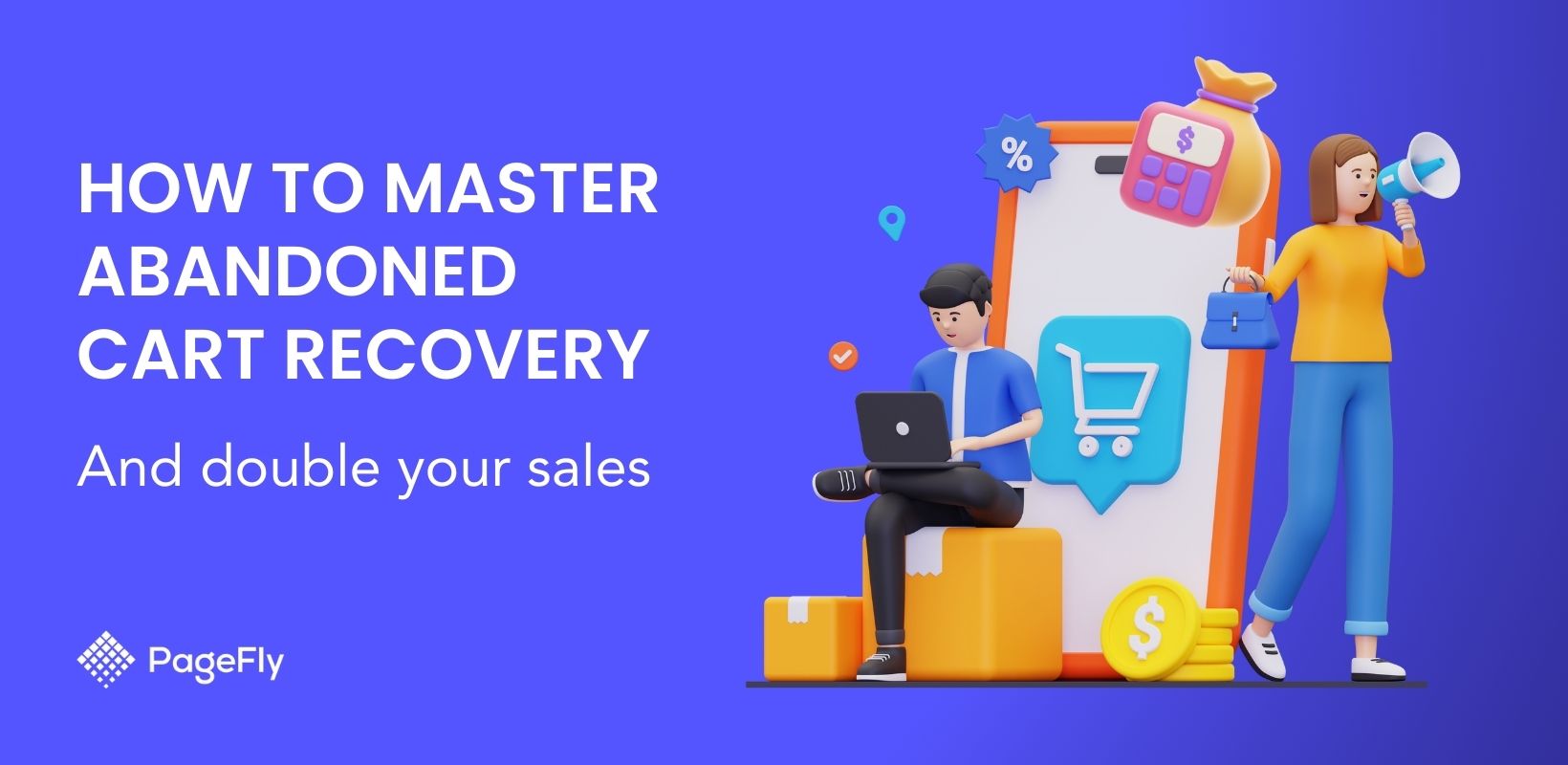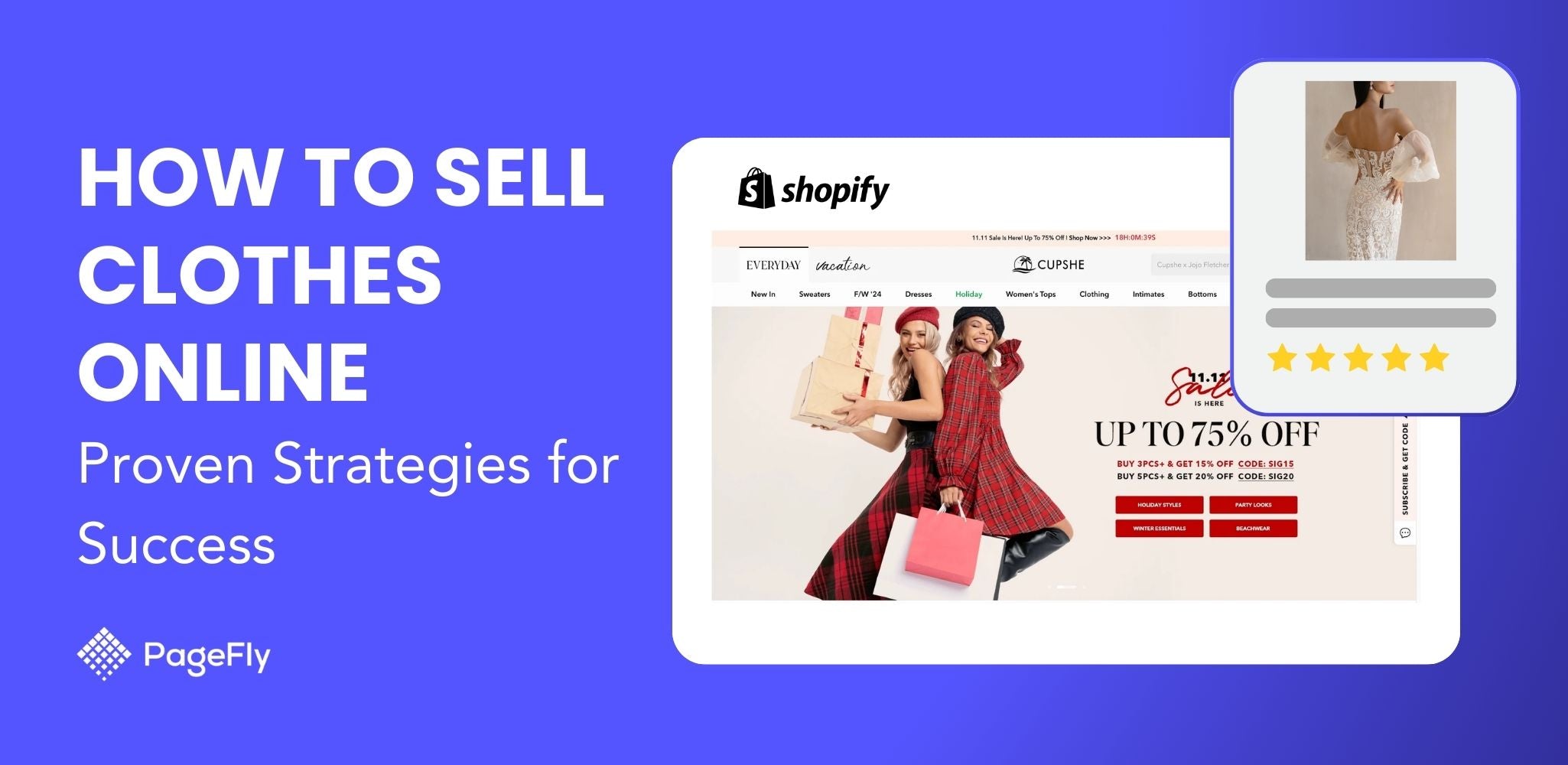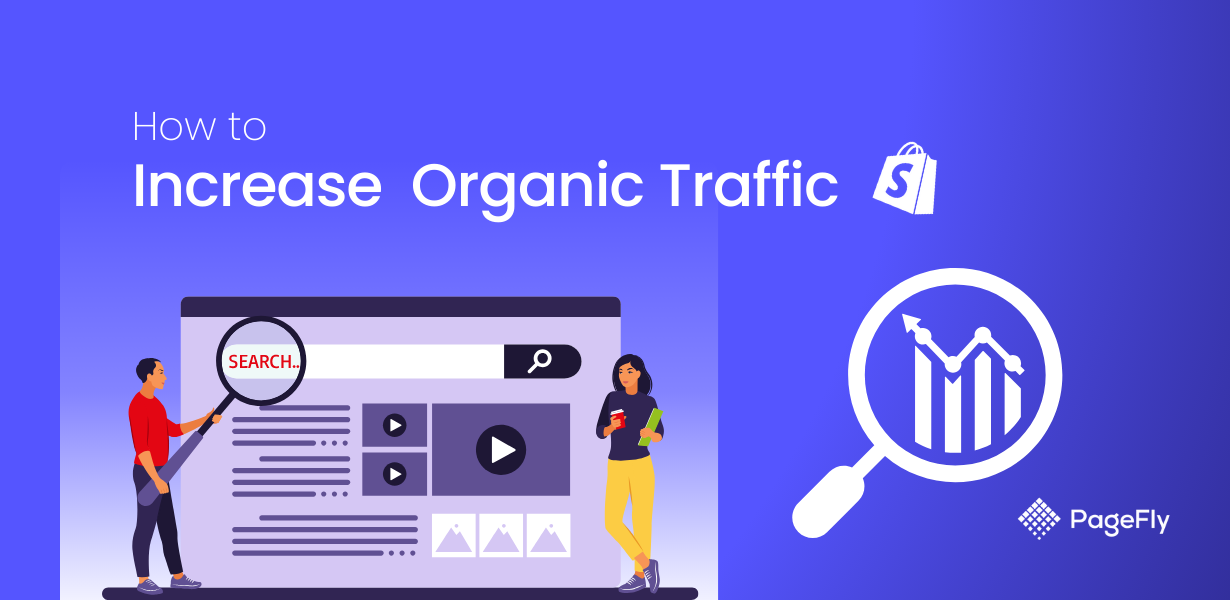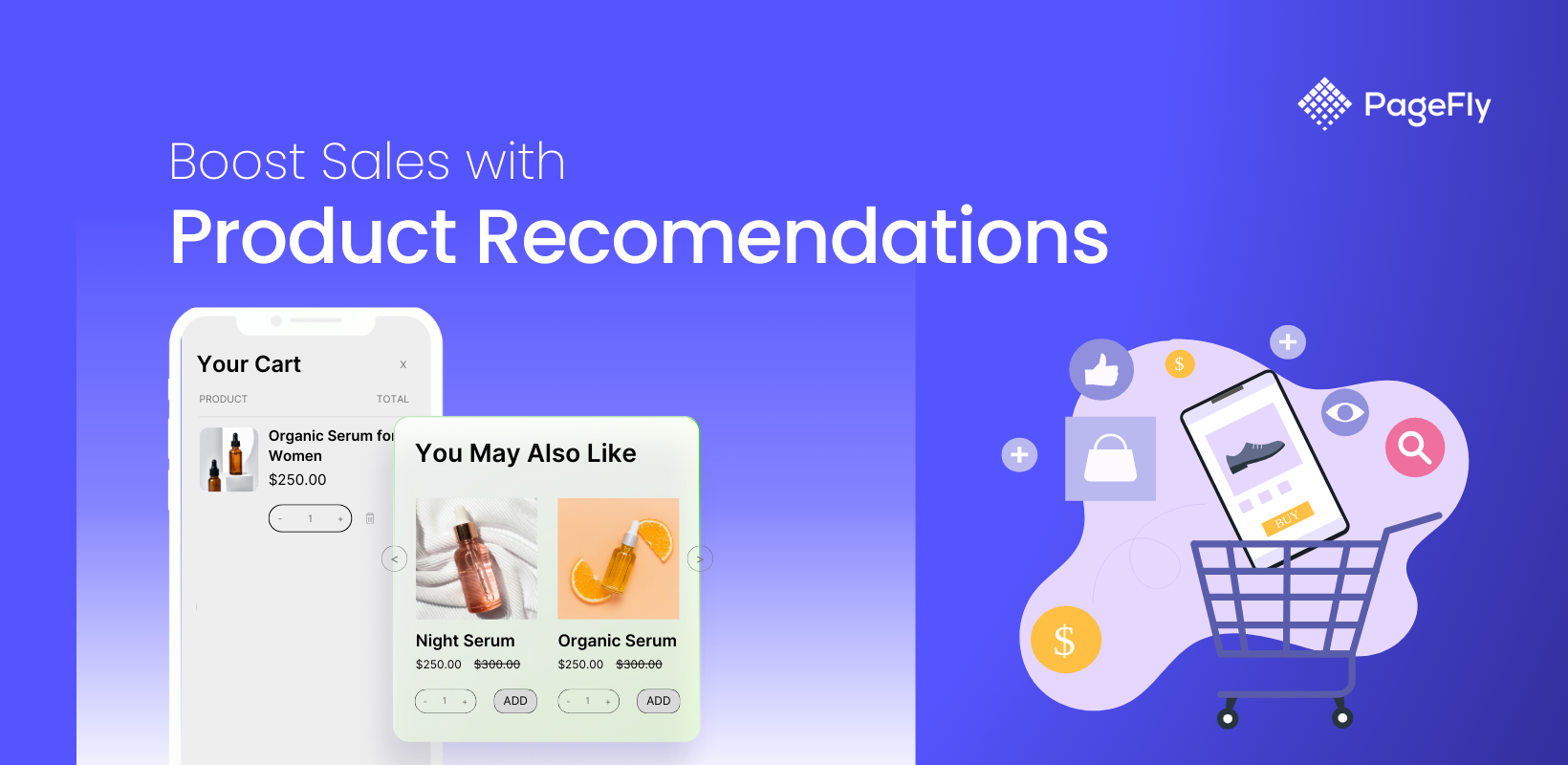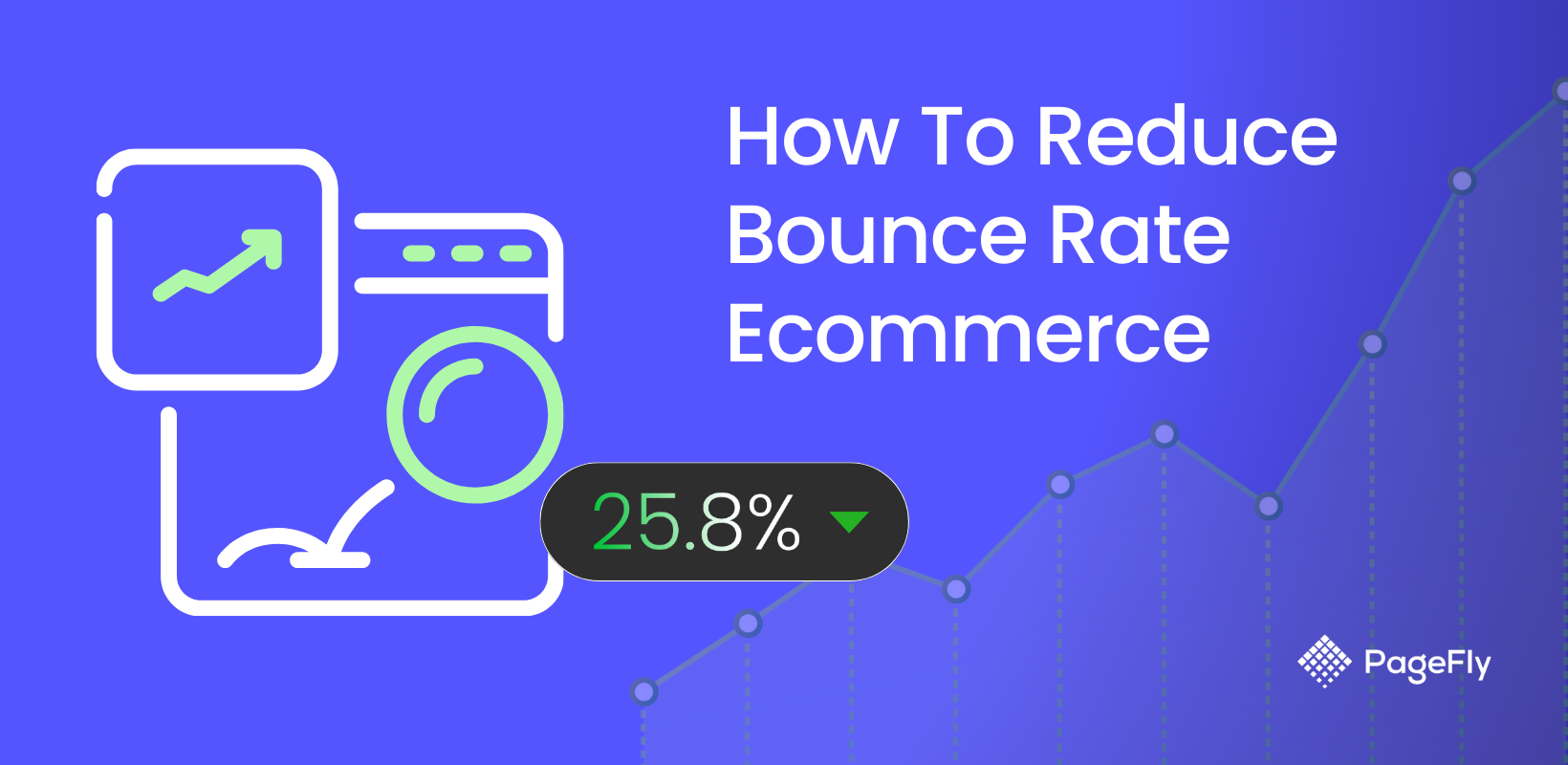High-performing websites do more than attract visitors - they turn them into customers through effective CRO marketing. While many businesses focus on increasing traffic, industry leaders prioritize converting existing visitors into loyal customers who drive revenue growth.
If you're wondering how to increase Shopify conversion rate, CRO is the answer. Whether your goal is to boost sales or grow your email list, CRO ensures you maximize the value of every visitor interaction.
Ready to transform your traffic into tangible results? Let’s explore how CRO can power up your business growth and get you started with proven strategies that work.
What is CRO?
CRO Meaning in Marketing
When discussing "what is CRO," it's important first to define the concept of "conversion rate." Conversion rate represents the percentage of website visitors who complete a desired action.Conversion Rate Optimization (CRO) marketing is a strategy that improves a website’s performance to increase the percentage of visitors who take these actions. These actions might include:
- Making a purchase
- Signing up for a newsletter
- Downloading a resource
- Creating an account
- Adding items to cart
For example, if your online store implements effective CRO marketing strategies, you might see a visitor not only browsing products but also joining your email list and eventually making a purchase.
Why Conversion Rate Optimization is Critical for Your Business
Revenue Growth
CRO marketing drives revenue through both immediate sales and long-term value. By optimizing your conversion funnel, you'll see increased order values, better email capture rates, and improved return on ad spend without raising marketing costs.
Maximizing Current Traffic
Effective web conversion optimisation transforms your current traffic into revenue. By reducing cart abandonment and enhancing customer retention, you'll generate more value from existing visitors. Smart optimization leads to higher repeat purchase rates and increased customer loyalty.
Better User Experience
CRO creates a seamless shopping journey through faster loading times, intuitive navigation, and clear product information. Mobile-optimized interfaces and streamlined checkout processes eliminate friction points that prevent conversions.
Brand Loyalty
Beyond metrics, CRO builds lasting customer relationships through memorable experiences and reliable service. This fosters trust and encourages word-of-mouth marketing, creating a community of engaged brand advocates.
How to Calculate and Define a Good Conversion Rate?
The basic formula for measuring conversion rate is straightforward:
Conversion Rate = (Number of Conversions / Total Number of Visitors) × 100
To illustrate this formula in action, consider an ecommerce site that receives 10,000 monthly visitors and generates 200 completed purchases. Using the formula, we calculate: (200 / 10,000) × 100 = 2% conversion rate. This means for every 100 visitors to the website, 2 complete a purchase.
A "good" conversion rate varies by industry and business model. According to recent research by Speed Commerce, the average conversion rate for e-commerce websites typically ranges from 2.5% to 3%, while top performers achieve 11% or higher.
Incorporating strategies like Shopify A/B testing can help identify what works best for your store and improve your metrics. As you delve deeper into conversion rate optimization, you’ll be able to set benchmarks and goals based on your own past performance. Until then, using the average conversion rates of similar websites as a reference point can be a valuable starting guide.
Industry-specific benchmarks reveal diverse performance standards:

Source: Speed Commerce
A conversion rate below your industry average might signal opportunities to improve:
- Website user experience
- Value proposition clarity
- Traffic quality
- Purchase journey optimization
Remember: While these benchmarks provide valuable context, your optimal conversion rate depends on your specific business model, product type, and target market. The goal isn't just to meet industry averages but to continuously optimize toward top-performer levels.

Where Should You Use CRO for Effective Web Conversion Optimisation?

Every page on your website presents optimization opportunities. Whether you're building pages from scratch or optimizing existing ones, understanding key CRO principles is crucial.
Tools like PageFly make CRO implementation process easier with ready-to-use templates and customizable elements designed to streamline your efforts.

Source: PageFly
Now, let’s dive into the key areas where you can apply CRO marketing strategies effectively:
Homepage: Your Digital Storefront
Think of your homepage as your store's front window on the busiest street in town. Just as physical stores carefully arrange their window displays, your homepage needs to immediately capture attention and guide visitors toward action.
Instead of overwhelming visitors with information, focus on what matters:
- Clear Value Proposition: Ensure your homepage prominently displays your unique value proposition. Use concise messaging that communicates what sets you apart.
- Compelling Visuals: Utilize high-quality images or videos that resonate with your audience and illustrate your offerings.
- Strategic CTAs: Place clear and enticing calls-to-action (CTAs) above the fold, encouraging users to explore further or sign up.
- Simplified Navigation: Reduce clutter by organizing content logically and ensuring easy access to key sections of your site.
- Trust Signals: 72% of customers trust businesses more after reading positive reviews (source: brightlocal.com/). Display testimonials, security badges, and industry awards on your homepage to build credibility and reassure visitors about your offerings.
Real example: Mailchimp nails homepage conversion with three key elements: a clear value proposition ("Turn Emails into Revenue"), immediate social proof ("11M+ users"), and simple navigation paths. Every element above the fold serves a purpose in moving visitors toward action.

Product Pages: Where Decisions Happen
Product pages are your virtual salespeople. They need to provide all the information a customer needs to make a confident purchase decision.
Focus on creating comprehensive product descriptions that highlight benefits, not just features. Instead of "100% cotton t-shirt," explain "Breathable 100% cotton that keeps you comfortable all day." Use high-quality images from multiple angles, and consider adding video demonstrations for complex products.
The key elements should work together seamlessly:
- High-Quality Images: Include multiple images from different angles, and consider adding zoom functionality for a closer look.
- Detailed Descriptions: Write engaging product descriptions that highlight benefits, features, and use cases. Use bullet points for easy readability.
- Customer Reviews: Showcase genuine customer reviews and ratings to build trust and provide social proof.
- Urgency Tactics: Implement countdown timers for limited-time offers or low-stock alerts to encourage immediate purchases.
Take Amazon's product pages as an example – they excel at presenting information in digestible chunks while addressing common customer concerns.


Blog: Content That Converts
Your blog isn't just for SEO – it's a powerful conversion tool when used strategically. Create content that naturally leads to your products. For example, if you sell kitchen appliances, write detailed cooking guides that demonstrate how your products make the process easier. Within each post:
- Relevant CTAs: Integrate contextual calls-to-action within your blog posts that guide readers towards related products or services.
- Engaging Formats: Use a mix of text, images, infographics, and videos to make content more engaging and visually appealing.
- Scannable Layout: Break up text with subheadings, bullet points, and short paragraphs to enhance readability.
- Internal Linking: Link to other relevant articles or product pages within your content to keep users engaged and improve SEO.
Look at how HubSpot structures their blog posts: valuable content first, relevant CTAs throughout, and smart lead magnets that align with the reader's interests.

Pricing Page: Making the Decision Easy
A well-designed pricing page reduces hesitation and builds confidence. Structure your pricing information to eliminate confusion:
- Transparent Pricing Structure: Clearly outline pricing options, including any additional fees or discounts. Consider using a comparison table for clarity.
- Highlight Value: Emphasize the benefits of each pricing tier and what customers will gain by choosing higher-priced options.
- Testimonials & Case Studies: Include success stories or testimonials from satisfied customers to reinforce credibility.
- Money-Back Guarantee: Offer a satisfaction guarantee or free trial period to reduce perceived risk.
Slack's pricing page succeeds through simplicity: clear plan comparisons, highlighted recommendations, and transparent feature lists. They reduce decision friction by anticipating and addressing customer concerns upfront.

Landing Pages and CTAs: The Final Push
Let's dig deeper into creating landing pages and CTAs that actually convert. This is where the rubber meets the road in your conversion strategy.
Here are four key strategies to create high-converting landing pages:
- Targeted Messaging: Ensure landing pages align with specific campaigns or ads, maintaining consistent messaging throughout the user journey.
- Strong CTAs: Use action-oriented language in your CTAs (e.g., "Get Started Now" or "Claim Your Offer") and make them visually distinct.
- A/B Testing: Regularly test different elements such as headlines, images, and button placements to find what drives the highest conversions.
- Minimal Distractions: Keep landing pages focused on a single goal, minimizing navigation options and external links that could divert attention.
Shopify's partner program landing page succeeds with a clear headline and targeted messaging. Their clean design highlights partner benefits and success metrics, while keeping the sign-up CTA prominent despite maintaining main navigation.

Conclusion
Success in CRO comes from smart testing and constant refinement. Start small: pick one area of your website, track its performance, and listen to your users. Let A/B testing show you what actually works, not what you think might work. Remember – there's no universal formula. Your customers' unique behavior should shape every optimization decision.
Consider using PageFly - the #1 Shopify landing page builder to build high-converting pages for your store. With its powerful features and intuitive interface, you can create optimized pages that drive better results for your business. Start your optimization journey today and transform your website visitors into loyal customers.




